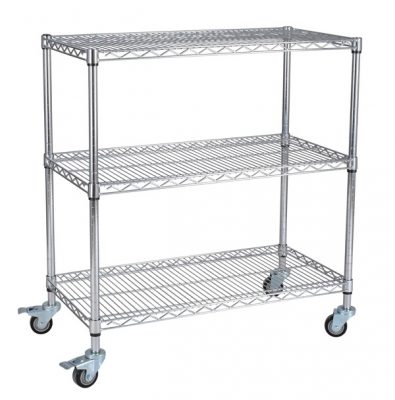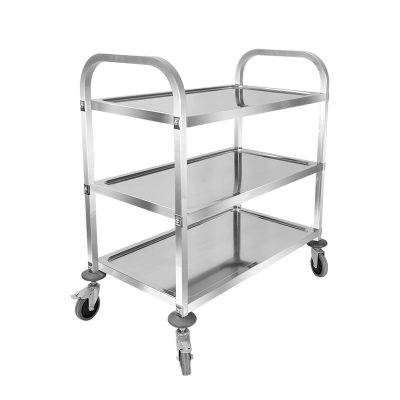Manual Labor Era: In the past, many industrial tasks were labor-intensive, relying heavily on human physical effort for material handling, transportation, and various processes. This approach had several limitations:
- Physical Strain: Manual lifting, pushing, and pulling of heavy loads placed significant strain on workers’ bodies, leading to fatigue, injuries, and decreased productivity.
- Inefficiency: Manual labor was often slower and less efficient, as it depended on the physical capabilities of individuals.
- Limited Scale: Manual labor constrained the scale and scope of industrial operations, hindering the ability to handle large quantities of materials or products.
- Safety Concerns: The risk of workplace injuries due to heavy lifting and repetitive motions was high, leading to increased workers’ compensation claims and downtime.
Transition to Powered Industrial Trolleys: The transition from manual labor to powered industrial trolleys represents a paradigm shift that addresses the limitations of manual processes. Powered trolleys are equipped with motors, batteries, and advanced control systems that provide various benefits:
- Enhanced Efficiency: Powered trolleys significantly improve material handling speed and efficiency, enabling quicker movement of materials, tools, and products within industrial facilities.
- Reduced Physical Strain: Workers no longer need to exert excessive physical effort to move heavy loads, reducing the risk of injuries and promoting a healthier work environment.
- Increased Capacity: Powered trolleys can handle larger loads than traditional manual trolleys, allowing for more materials or products to be moved in a single trip.
- Adaptability: These trolleys can be designed and programmed for specific tasks, making them adaptable to various processes and industries.
- Technological Integration: Powered trolleys often incorporate advanced technologies such as automation, remote control, and even autonomy, further enhancing their efficiency and capabilities.
- Improved Safety: Many powered trolleys are equipped with safety features like obstacle detection, collision avoidance, and emergency stop functions, enhancing workplace safety.
- Sustainability: Some powered trolleys use electric or battery power, reducing the reliance on fossil fuels and contributing to a more sustainable industrial ecosystem.
Benefits of Powered Industrial Trolleys: The adoption of powered industrial trolleys brings several benefits that contribute to overall industrial evolution:
- Productivity Boost: Faster material movement and reduced downtime result in increased productivity and output.
- Cost Savings: Reduced labor hours, fewer injuries, and optimized workflows lead to cost savings over time.
- Workplace Safety: Lower physical strain and advanced safety features lead to a safer work environment and fewer workplace injuries.
- Process Optimization: Powered trolleys allow for streamlined workflows, reducing bottlenecks and improving overall process efficiency.
- Scalability: Powered trolleys enable operations to scale up, handle larger loads, and accommodate growing demands.
- Technological Integration: The integration of technology positions industries at the forefront of innovation and automation.
- Employee Wellbeing: Improved working conditions and reduced physical strain enhance employee satisfaction and wellbeing.
The transition from manual labor to powered industrial trolleys exemplifies the ongoing evolution of industries as they embrace technology, automation, and efficiency-enhancing solutions to drive progress and better meet the demands of modern manufacturing and logistics.



















